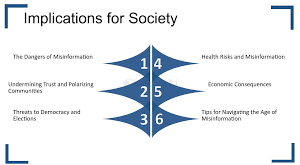Face reputation: Revolutionizing generation and privateness
Creation
Creating face popularity is sophisticated from being an opening in studies to mainstream software, penetrating into multiple features of daily lifestyles. From unlocking smart phones and identifying criminals, the utilization of face reputation is huge and diverse.
However, the growing numberable questions arise related to privacy, ethics, and safety. This text delves into the records, modern programs, benefits, drawbacks, and future implications of creating face popularity generation.
Historical Backdrop
Face reputation concept dates back to the 1960s while Woodrow Wilson Bledsoe, an American psychologist started experimenting with computer-generated face identification. Bledsoe’s early works established a foundation for further research work, leading to the design of more sophisticated algorithms and techniques.
By the late 1990s, improvements in computing power and machine learning have been able to face reputation systems that are more accurate and environment-friendly.
The decade of deep acquiring knowledge in the 2010s was a turning point in the field. Researchers began using CNNs to scan facial features, and this indeed was quite accurate. This led the generation of people becoming part of commercially developed programs.
How Face recognition Works
Face popularity era involves quite some key steps:
1. Photograph Acquisition:
The first step is to take photos or an image of a face, which can be by cameras, mobile phones, or other imaging devices.
2. Face Detection:
The machine detects a face from the photograph. These are mainly accomplished through algorithms that are designed to detect facial patterns.
3. Feature Extraction:
Important facial features include distance between the eyes, shape of the nose, and the jaw outline. These features are transformed into a numerical plan referred to as a facial embedding.
4. Matching:
Extracted features are compared in opposition to a database of recognized faces. This can involve various strategies, including distance metrics, to ensure how closely the functions match.
5. Decision Making:
lastly, the appliance determines on the best outcome, it recognizes the user or identifies him as unknown.
Packages of Face reputation
Face reputation technology is implemented in different sectors include:
1. Security and regulation Enforcement
One of the biggest packages of face recognition lies in security and regulation enforcement. The police use it to identify suspects in real-time, review surveillance footage, and track missing persons. The technology has greatly aided in solving crimes better.
2. Unlocking devices
Smartphones and drugs utilization face popularity to beautify security. This biometric authentication approach offers a handy method for users to liberate their gadgets besides the want for passwords or PINs. nowadays, nice examples include Apple’s Face identification and various Android-based totally facial release systems.
3. Retail and marketing
shops use face recognition to create beauty for customers’ experiences while improving marketing and advertising strategies. Thanks to the study of client demographics and behavior, agencies can tailor promotions and offerings.
Some shop even use it to track customer visitation and analyze buying behavior patterns.
4. Social Media
These social media platforms employ the face recognition for tagging of the users on their photographs frequently. This feature enhances the consumer engagement by making the process of sharing easier. However, this does pose concerns on the privacy and consent.
5. Airports security
Airports have been becoming increasingly accepting in integrating face recognition technology to hasten the screening procedure for passengers. Using face comparison of travelers with their passport photographs could make security better without making the passengers stand for very long time for their lines of people.
Benefits of Face reputation
Face recognition generation advantages
1.Better security
Face acceptance promotes safety through doubling a means of verification. In law enforcement, it may even speed the identification process of criminals, hence the possibility of upcoming crimes.
2. Ease
Face recognition can’t be compared when it comes to providing convenience. Unlocking gadgets and accessing services will even be faster and user-friendly with daily tasks being much eco-friendly.
3. performance enhancement
Besides airports and shopping environments, face acceptance coheres tactics. This outstanding performance may result in enhanced customer pride and reduced operation expenses.
4. Database collection chain
agencies can obtain valuable information about the demographics and behavior of customers using face reputation generation. Agencies may use such information to improve services and products.
Risks and challenges
Despite its benefits, face reputation generation poses many challenging problems:
1. Privacy issues
Most important: the ability intrusion of privacy. people may not even know that their faces are being captured and analyzed, leading to serious questions about consent and surveillance.
2. Misidentification
The Face reputation systems aren’t perfect. There were several instances of misidentification, mainly minorities who were wrongly accused or arrested. This problem raises key concerns about bias and discrimination.
3. Security risks
With increased safety through face recognition, it can also be exploited. In theory, hackers should make fake identities or control the machine, hence compromising its integrity.
4. Regulatory challenges
The rapid growth of face popularity technology has outpaced regulatory frameworks. Governments and businesses are struggling to develop guidelines that protect individual rights while making room for innovation.
Ethical Considerations
The moral implications of generating face recognition are complex: on the one hand, the power of beautifying protection and convenience shines; on the other, it brings urgent questions regarding privacy and autonomy. Balancing those competing interests is essential.
1. Consent and Transparency
An important ethical issue is that there is no consent from individuals whose faces are scanned. agencies should strive to be transparent, enlightening people about the collection of facts practices and obtaining permission every time possible .
2. Bias in Algorithms
Bias in face recognition systems should be countered. developers should ensure that their algorithms are trained on diverse datasets to reduce the risk of misidentification and discrimination.
3. Responsibility
There should be clear responsibility for the use of face recognition technology. That would involve establishing protocols for law enforcement and private organizations to ensure responsible use and recourse for those aggrieved by misuse.
Fate of face reputation
The future of face popularity technology is most likely to be defined by similar breakthroughs and increased scrutiny. As device learning and artificial skill continue to adhere, we can expect improvements in precision and reliability. However, ethical and privacy concerns will require close scrutiny and regulation.
1. Regulation and Oversight
Further, on public concerns the government can enforce stricter regulations about face popularity era. this includes guidelines for facts series, storing, and sharing practices, along with repercussions for misuse.
2. More favorable security features
As face reputation era matures, we may also experience the blending of multi-component authentication methods that merge face recognition with other biometric identifiers, such as fingerprints or iris scans, improving security at the expense of privacy.
Public perception
Public attitude toward face reputation technology is likely to change. As awareness of its implications increases, people will probably ask for greater control over their data and more transparency from companies.
End
Face recognition generation can revolutionize the majority of industries, offering benefits in terms of security, ease, and effectiveness. The downside is it also carries with it significant ethical and privacy issues related to its use.
However, as technology advances, there will be a basic and critical need to find a balance between innovation and personal rights, determining the future of face recognition. By taking the necessary initiative and working through the challenges appropriately,
society can unlock the potential of face recognition without sacrificing necessary rights and freedoms.


